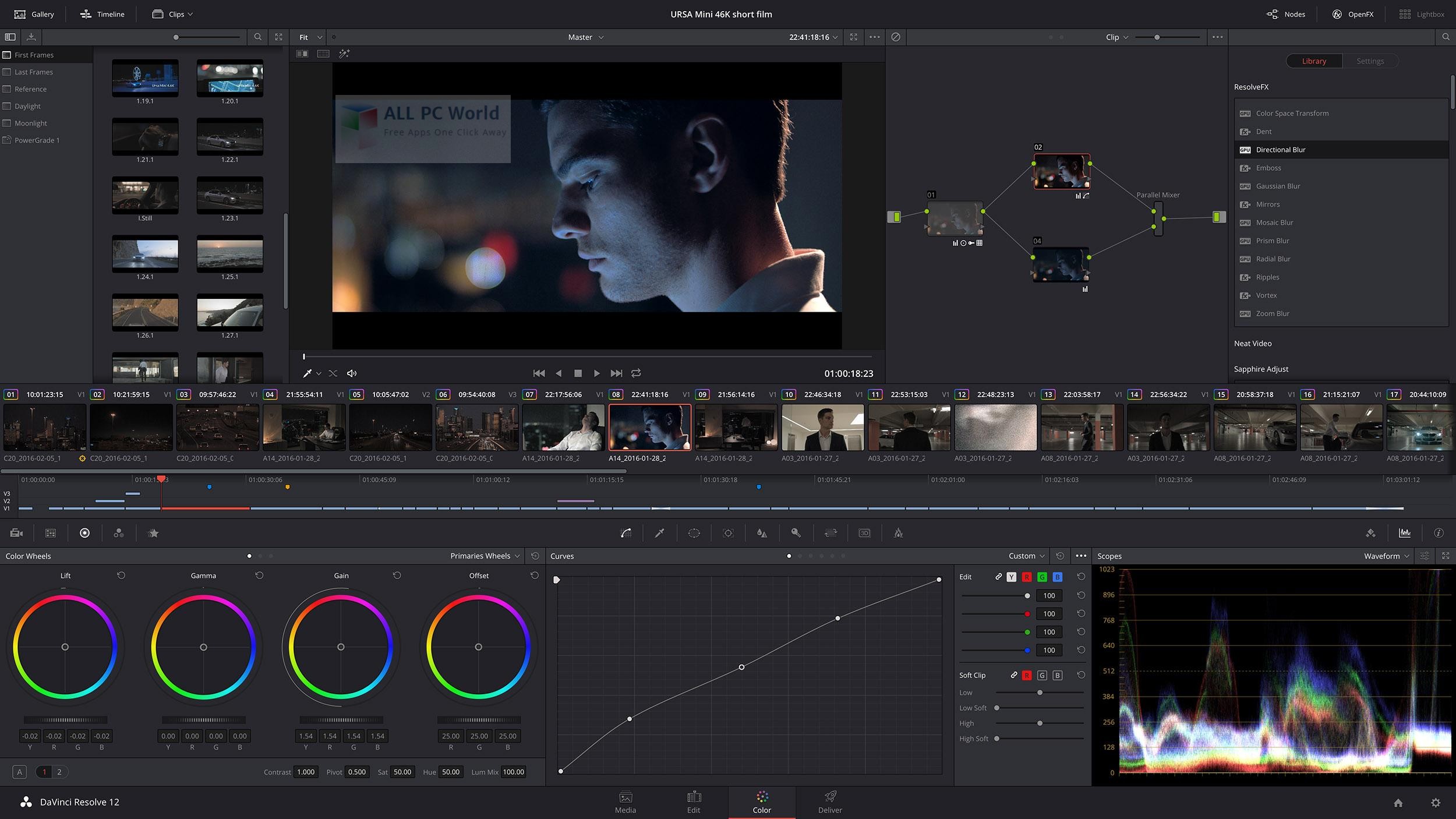

- HOW TO USE DAVINCI RESOLVE CANON 7D MOVIE
- HOW TO USE DAVINCI RESOLVE CANON 7D TV
- HOW TO USE DAVINCI RESOLVE CANON 7D MAC
There is a THM file (thumbnail file) that contains a data/time stamp.
HOW TO USE DAVINCI RESOLVE CANON 7D MOVIE
The Canon camera movie files contain little or no metadata, such as a timecode track. The real strength of MPEG Streamclip is that it doesn’t require FCP, so data conversion can start on location on an available laptop, if you are really in that sort of rush. The same conversion runs about 1.5x real-time (slower) using the EOS plug-in.
HOW TO USE DAVINCI RESOLVE CANON 7D MAC
MPEG Streamclip allows you to initiate four processes in the batch at one time, which means that on a 4, 8 or 12-core Mac Pro, your conversion will be approximately real-time. 32GB CF cards will hold about 90-96 minutes of Canon video, so a shoot that generates 4-8 cards in a day means quite a lot of file conversion and you need to allow for that. So, in my experience, MPEG Streamclip has not only been the fastest encoder, but will easily gobble a large batch without crashing and delivers equal quality to most other methods. I have also had unreliable results using the FCP Log and Transfer EOS plug-in.
HOW TO USE DAVINCI RESOLVE CANON 7D TV
I haven’t tried 5DtoRGB yet, because it is supposed to be a very slow conversion and most TV projects don’t warrant the added quality it may offer. I have tried the various encoders, like Compressor or Grinder, but in the end have come back to MPEG Streamclip. Avid editors may choose to use an Avid DNxHD codec instead. Generally, I will use ProResLT, however, if there is really a quality concern, because the project may go through more heavy post, then use standard ProRes or ProResHQ. I prefer to organize these files outside of the NLE and get them into a codec that’s easy to deal with using just about any editing or compositing application. Yes, various NLEs can natively work with the camera’s H.264 movie files, but I still find this native performance to be sluggish. Once that’s out of the way, the first thing I do with files from a Canon 5D or 7D is convert them to the Apple ProRes codec. This is your “negative” and you ALWAYS want to preserve it in its original and UNALTERED form. One application to consider for this purpose is Videotoolshed’s Offloader. Here is a step-by-step strategy for working with HDSLR footage, specifically from Canon 5D/7D/1D HDLSR cameras.īefore doing anything with the camera files, it is IMPERATIVE that you clone the camera cards. Many of the early post issues, like the need to convert frame rates, are now behind us. To date, I have edited about 40 spots and short-form videos that were all shot using the Canon EOS 5D Mark II. In six months, the post workflows might once again change. Nikon is coming on strong with its D7000 and Panasonic has made a serious entry into the large-format-sensor video camera market with its Micro 4/3” AG-AF100.


The Canon cameras are the dominant choice, but that’s for today. To some extend this is a “refresh” of the Round II article, given the things I’ve learned since then. Although some of this information will seem redundant with earlier articles ( here and here), I decided it was a good time to set down a working recipe of how I like to deal with these files. The interest in HDSLR production and post shows no sign of waning.


 0 kommentar(er)
0 kommentar(er)
